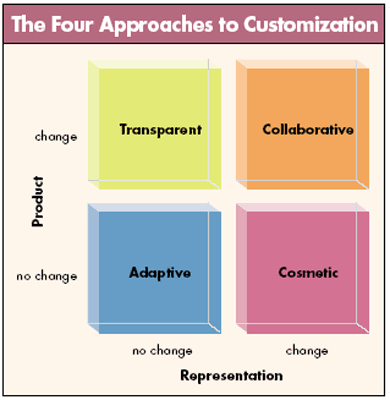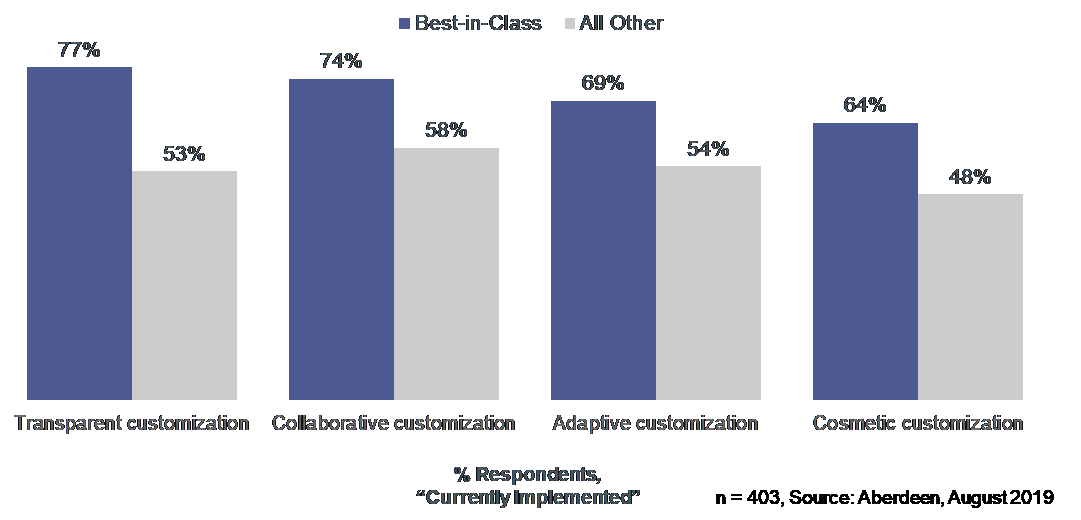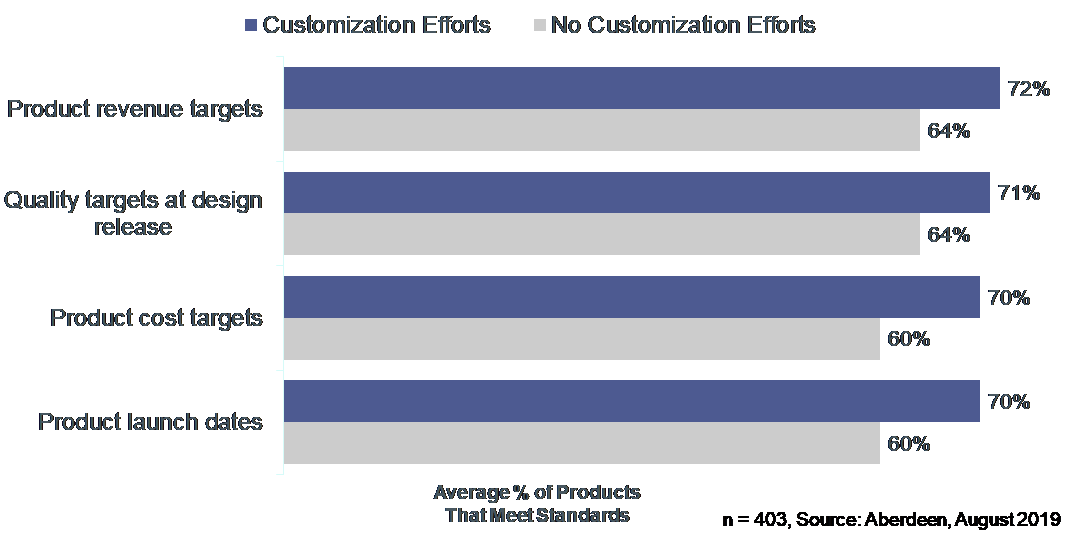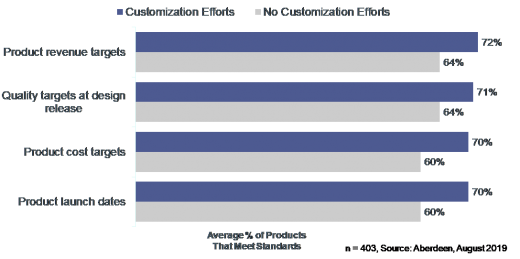A Snapshot of Mass Customization Trends
We’ve come a long way from hammering rocks and bones into individual tools and toys. Before we know it, we’ll be able to personalize our experience on a spaceship to Mars. But where are mass customization efforts right now?
As many businesses are moving toward smart manufacturing during this 4th Industrial Revolution, customization processes are becoming more and more manageable. Successful customization methods identify areas of common uniqueness and focus efforts on those specific areas. This way, manufacturers only need to adjust a few steps within the production process to create customized goods rather than restarting the entire process to produce a batch of personalized items.
These newly developed upgrades to customization are having an impact on productivity.
In the past two years, the percent change in performance for Engineering Change Orders (ECOs) was 62% across companies with customization efforts, versus only 51% for those that lack customization. With fewer changes in components and assemblies, companies can run more efficiently while still producing many personalized items on a large scale.
Customization can be extremely beneficial, but also extremely time-consuming and costly. It is important to determine which type of customization will have the highest returns based on product changes and representation goals. An article in Harvard Business Review describes four main approaches to customization.
Figure 1. Approaches to Customization

With adaptive customization, manufacturers make the same physical product and display it to every customer the same way. However, the product is utilized by the consumer in a customizable fashion. For example, light bulbs that change based on music or actions of the user are physically the same for all consumers. Still, they are used to address each consumer’s personal needs.
Transparent customization involves creating a physically different product for each consumer. Nevertheless, products are packaged in such a way that the consumer is unaware of any differences. An example is self-care products such as shampoo, conditioner, and soap. These products are customized to fit a person’s preferences, but are bottled so every unit appears the same.
Cosmetic customization allows the manufacturer to produce the same physical product but personalize it toward the end of the production process, so all products function identically but do not look identical. One basic example of cosmetic customization is promotional items.
Lastly, and certainly the most complex, is collaborative customization. This entails working closely with the consumer to create their exact products in looks and functionality. With glasses for example, consumers have the option to choose their frames as well as their prescription lenses.
With the understanding of these four pillars of customization, we can now explore the relationship between these forms and the actions of Best-in-Class companies. Aberdeen’s latest manufacturing study shows Best-in-Class companies are more likely to invest in all customization efforts than other companies.
Figure 2. Customization Efforts

Best-in-Class companies see the value in maximizing production capabilities. They are especially invested in transparent and collaborative customization, the two forms of customization that involve changing the physical product. A key aspect of new smart manufacturing technologies is the ability to adjust products during the manufacturing process. This adjustment makes companies agile and reduces downtime. In fact, companies who have currently implemented some form of customization see a 62% savings reduction relating to the cut in production downtime. Other companies only see a 49% reduction.
In addition to changes in downtime, customization efforts influence many business areas, including revenue, product quality, product costs, and production timelines.
Figure 3. Business Impact of Investing in Innovative Customization

Overall, those utilizing innovative customization techniques are seeing more business results at the product level. With the ability to produce each personalized product at a high speed, low cost, and high quality, it’s no wonder Best-in-Class companies are taking advantage of customization efforts.
Customization is on the rise, and the Best-in-Class are making this a top priority. Those with current customization efforts in place are already seeing results in revenue, quality, costs, and speed. There is no longer a need to spend excess time and money crafting individual units for consumers; rather, the mass customization advances allow businesses to churn out millions of personalized items in the blink of an eye.
Business & Finance Articles on Business 2 Community
(36)


